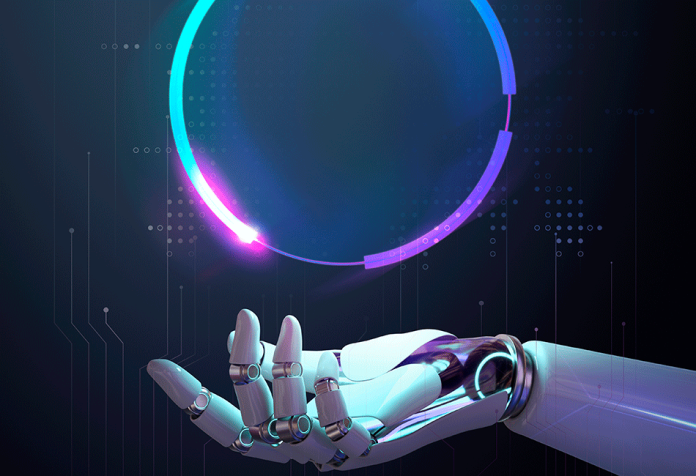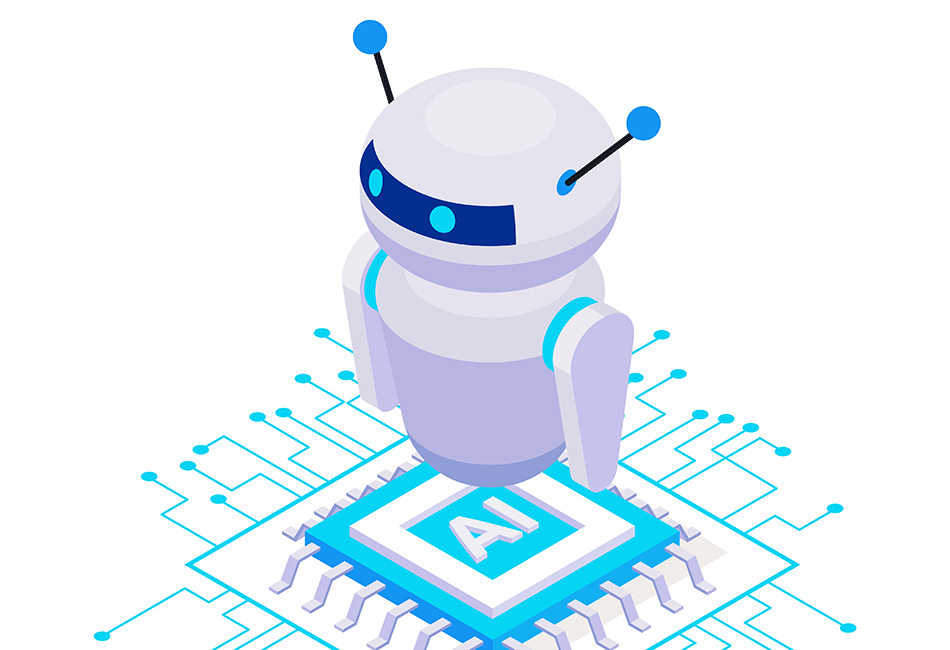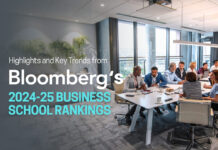By Jacques Bughin, Philippe Roussière, and Praveen Tanguturi
As more traditional companies are investing in AI, we explore best practices used by leaders to transform those investments in a new organizational capability of intelligence.
KEY TAKEAWAYS
- Intelligent enterprises are those that use data and technology to drive innovation, optimize operations, and create value for customers and stakeholders.
- To become an intelligent enterprise, companies must embrace digital transformation, adopt a data-driven mindset, and invest in analytics, AI, and automation.
- Intelligent enterprises prioritize customer experience, agility, and sustainability, and use technology to empower employees and create a culture of innovation and continuous improvement.
Artificial Intelligence (AI) underwent a new revolution a decade ago, fuelled by the rise of big data and the unique performance of neural network-based machine learning (ML) algorithms. AI continues to make major progress, especially with the recent adoption of generative AI such as ChatGPT or DALL-E by OpenAI.
As with any technology paradigm shift, digital native companies have been the most likely to adopt it. But in recent years, a major tipping is appearing:1 many large traditional companies have doubled their investments in AI technologies, now devoting a significant portion (about 25%) of their technology budgets to AI, and planning to continue to spend more on it in the coming years.
Investments by incumbents imply that companies are foreseeing strong returns from AI. But as we have known from the past, those returns are not automatic. In recent research2, we sought to understand the economics of AI for large companies around the world that already have an AI strategy in place, and especially what will make AI investments worth their spending. Here is what we have found:
A tech foundation: necessary but not sufficient
One well-established assertion is that returns to technology start by mastering the technology stack. But despite this truism, many companies still struggle with it. In the case of AI, the tech stack must have a sufficient volume and variety of data, a cloud and data lake infrastructure, and an AI technology platform that enables high-performance machine learning techniques. Only a minority of large, well-known global companies, have this stack in place.
From knowledgeable to intelligent enterprise
The tech platform mantra is not new. It was already clear during the computer revolution3, followed by the digital revolution.4 What our results add to this mantra is that the technology platform contributes disproportionately to the transition of AI from experimentation to production.
But it does not contribute much to scaling AI within organisations. Scaling requires more. And the driver of major rewards to AI is whether a corporate masters the new dynamic capability of intelligence.5 Generic dynamic capabilities, as defined by their pioneers, David Teece and Gary Pisano6, are the ability to detect, exploit, and transform key business resources. Translated in this case, AI critically offers the opportunity to transform the typical enterprise knowledge resources into a new capability of intelligent insights. Strikingly, we find that over 50% of AI returns comes from this intelligent capability.
 What are the features of this new intelligence? The first feature of this new intelligence is based on the fact that firms think ahead of time- they are using AI as an ability to better predict business outcomes. The second feature of this intelligence is that companies are shifting from thinking in terms of pure efficient division of labour to embedding workers into new innovations. For them, thanks to AI, data experimentation has become a routine and the basis for new innovations. For them too, smart machines and people find ways to cooperate intelligently and flexibly such as AI supporting diagnosis in healthcare, augmenting physical tasks with AI, or creating immersive digital twins for experienced learning. The third feature, and the biggest game changer, is that intelligent companies have radically transformed their human resource organisations such that AI is not confined to only data science experts, but is the baseline of all the organisation which itself understands AI and perceives it as a constant source of delight and support for more intelligent tasks.
What are the features of this new intelligence? The first feature of this new intelligence is based on the fact that firms think ahead of time- they are using AI as an ability to better predict business outcomes. The second feature of this intelligence is that companies are shifting from thinking in terms of pure efficient division of labour to embedding workers into new innovations. For them, thanks to AI, data experimentation has become a routine and the basis for new innovations. For them too, smart machines and people find ways to cooperate intelligently and flexibly such as AI supporting diagnosis in healthcare, augmenting physical tasks with AI, or creating immersive digital twins for experienced learning. The third feature, and the biggest game changer, is that intelligent companies have radically transformed their human resource organisations such that AI is not confined to only data science experts, but is the baseline of all the organisation which itself understands AI and perceives it as a constant source of delight and support for more intelligent tasks.
Best practices, anyone?
This transformation to a collective corporate intelligence is only getting started. In practice, out of looking at those already migrating to this intelligence platform; we could derive five best practices that enable this new organisation revolution. Here they are:
- Institutionalise collaboration between an internal data science talent pool and external collaboration networks.
- Foster a permanent balance in the AI talent pool between data scientists and behavioural, ethical, and social scientists.
- Mandate AI-specific training for senior executives to effectively support the journey to an AI-centric business model.
- Stimulate a variety of skills for the entire workforce (data, coding, ML, translation skills) that are bundled with a data mart and/or data interface to support data-driven decision making as the de facto standard in the organisation.
- Maintain an ongoing partnership between AI and ML experts and business domain experts to facilitate information flow across the organisation.
A rare minority of companies are currently mastering those best practices, are you one of those? Our research suggests that the future of corporate AI will reside in new institutionalised intelligence – the journey has just begun.
About the Author
 Jacques Bughin is CEO of machaonadvisory, and a former professor of Management while retired from McKinsey as senior partner and director of the McKinsey Global Institute. He advises Antler and Fortino Capital, two major VC/PE firms, and serves on the board of multiple companies.
Jacques Bughin is CEO of machaonadvisory, and a former professor of Management while retired from McKinsey as senior partner and director of the McKinsey Global Institute. He advises Antler and Fortino Capital, two major VC/PE firms, and serves on the board of multiple companies.
 Philippe Roussière leads Innovation and AI at Accenture Research. He is a seasoned leader and innovator with over 25 years serving in a variety of research leadership roles on client-focused and thought leadership projects. He advises on using innovative methods like machine learning/NLP, economic modelling, data visualisation, and hybrid experiential research platforms.
Philippe Roussière leads Innovation and AI at Accenture Research. He is a seasoned leader and innovator with over 25 years serving in a variety of research leadership roles on client-focused and thought leadership projects. He advises on using innovative methods like machine learning/NLP, economic modelling, data visualisation, and hybrid experiential research platforms.
 Praveen Tanguturi is the global applied intelligence research lead at Accenture and was the research director for the aforementioned “Art of AI maturity” report.
Praveen Tanguturi is the global applied intelligence research lead at Accenture and was the research director for the aforementioned “Art of AI maturity” report.
References
- Crisis? What Crisis? Why European Companies Should Double Down on AI Now. 9 January 2023. The European Business Review. https://www.europeanbusinessreview.com/crisis-what-crisis-why-european-companies-should-double-down-on-ai-now-2/
- The transformative potential of artificial intelligence. 10 December 2021. Futures. https://www.sciencedirect.com/science/article/pii/S0016328721001932
- The Return on Information Technology: Who Benefits Most? 24 November 2020. Information
- Systems Research. https://pubsonline.informs.org/doi/abs/10.1287/isre.2020.0960
- Big data, Big bang? 7 January 2016. Journal of Big Data. https://journalofbigdata.springeropen.com/articles/10.1186/s40537-015-0014-3
- Beyond artificial intelligence: why companies need to go the extra step. 2020, Journal of Business
- Strategy. https://www.emerald.com/insight/content/doi/10.1108/JBS-05-2018-0086/full/html
- Dynamic capabilities and strategic management. 4 December 1998. Strategic Management Journal. https://onlinelibrary.wiley.com/doi/10.1002/%28SICI%291097-0266%28199708%2918%3A7%3C509%3A%3AAID-SMJ882%3E3.0.CO%3B2-Z



































